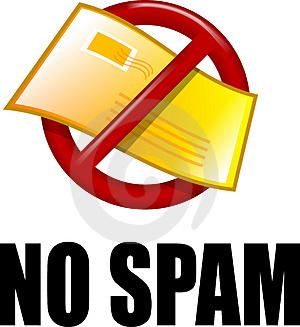Responsible internet marketing anti spam policy
Spam is the abuse of electronic messaging systems to send unsolicited bulk messages indiscriminately, commercial and non-commercial alike. There are a number of reasons that you should not send spam messages:
Spam doesn't work, most email users will never respond to spam messages and will most of the time delete them right away.
Spam will damage your reputation, most people associate spam with disreputable organizations they don't want to do business with.
There may be legal sanctions for sending spam, a number of states and countries have enacted anti-spam legislation, and it is likely that more will follow.
The following guidelines will help you avoid being identified as a spammer:
Always use opt-in email lists, lists of addresses of people who have agreed to receive email from you.
Always remind people that they have opted in to your list, use a simple footer line like "You receive this message because you are a subscriber of xyz company".
Always tell people how to remove themselves from your list, when someone does ask to be removed, do it promptly.
Always use a valid reply path, so that recipients can contact you by selecting "reply" in their email software.
If you receive a spam complaint, handle it promptly and professionally. If you do not already have a procedure for handling spam complaints, you should create one.
Never sell, rent, or trade your email list, if you do, you will lose the trust of the people on it and the permission to send them email.
Never purchase email lists, only use lists of addresses of people who have agreed to receive email from you. Create a web site, add a subscribe form and collect email addresses the right way!
Be aware that you are solely responsible for the messages you send. In many cases sending unsolicited email (aka Spam) is in violation of the law, and you will be solely accountable and liable for damages and violations.
We reserve the right to refuse technical support and/or other services if you:
Send unsolicited email deliberately.
You hijack a mail server relay.
Distribute illegal information or materials.
Forge header information.
Put false or misleading information in the subject.
Fail to provide a means for unsubscribing from your lists.
